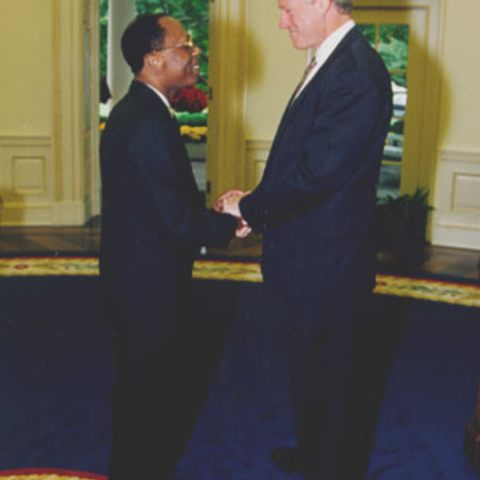
Haiti's Jean-Bertrand Aristide with President Bill Clinton in the Oval Office 1994
Source: Public Domain

François-Dominique Toussaint Louverture, leader of the Haitian Revolution (1791-1804)
Source: Public Domain
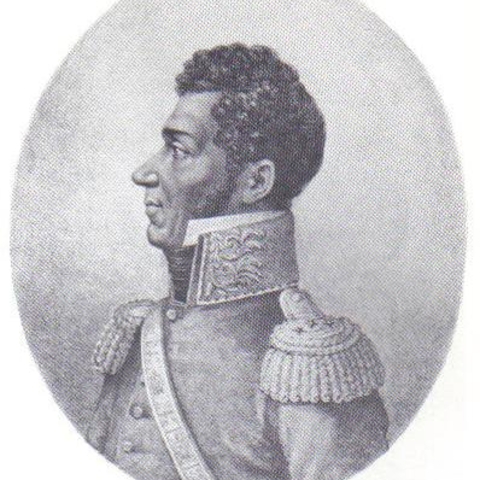
Jean-Pierre Boyer, Haiti's second president
Source: Public Domain
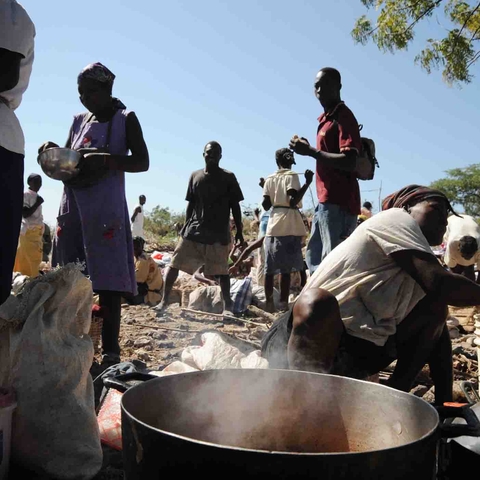
A market in contemporary Haiti
Source: Public Domain
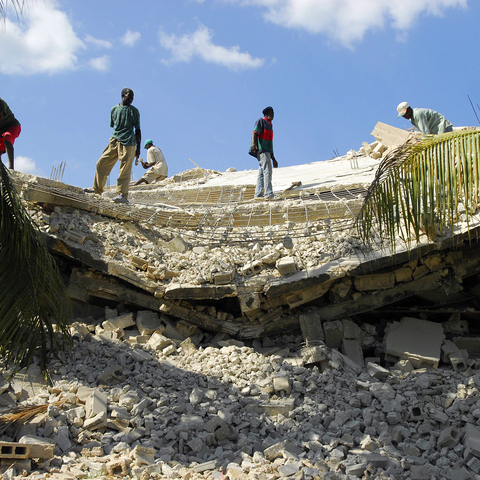
Haitians clear rubble days after the January 12, 2010 earthquake
Source: Public Domain
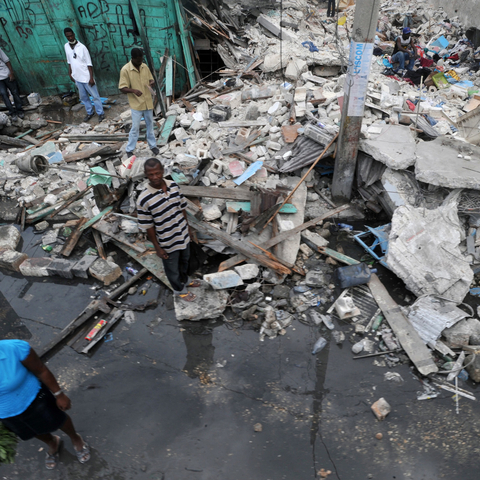
Devastation following Haiti's January 12, 2010 earthquake
Source: Agencia Brasil/Marcello Casal Jr
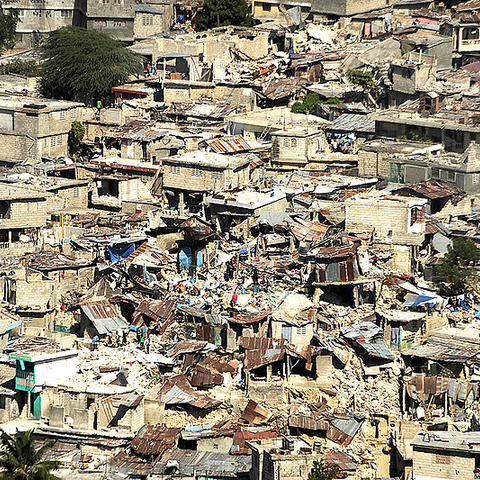
A neighborhood in Port-au-Prince following Haiti's January 12, 2010 earthquake
Source: Public Domain
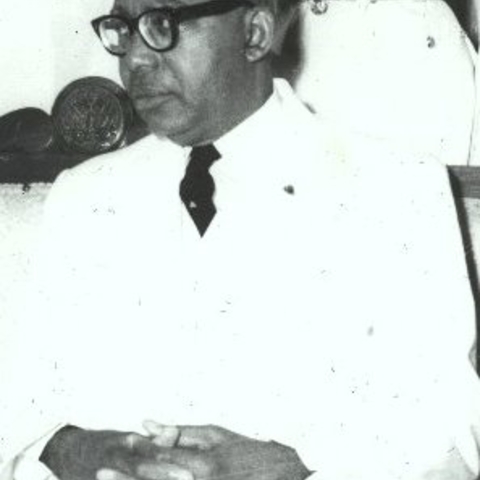
François Duvalier (nicknamed Papa Doc) president of Haiti 1957-1971
Source: Public Domain
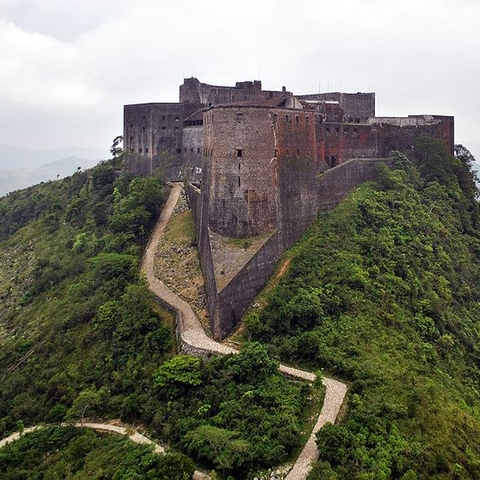
Haiti's Citadelle Laferrière
Source: Public Domain
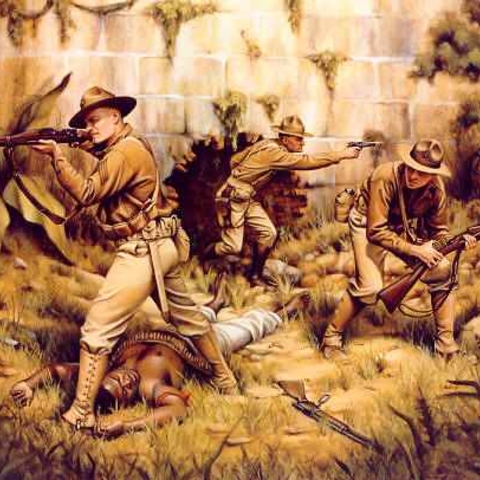
A depiction of American troops occupying Haiti, 1915
Source: Public Domain
Comments: Capture of Fort Riviere, Haiti , 1915, by Donna J. Neary
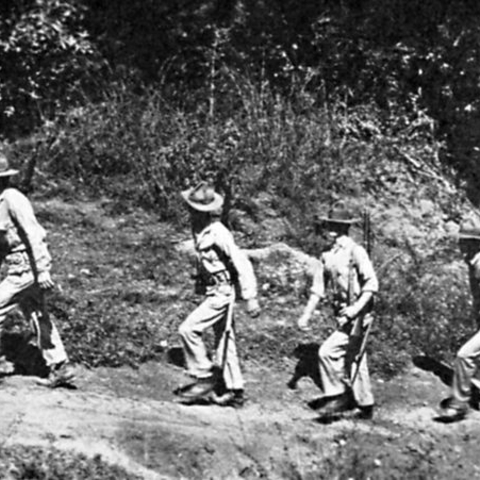
Americans on patrol in Haiti, 1921
Source: Public Domain
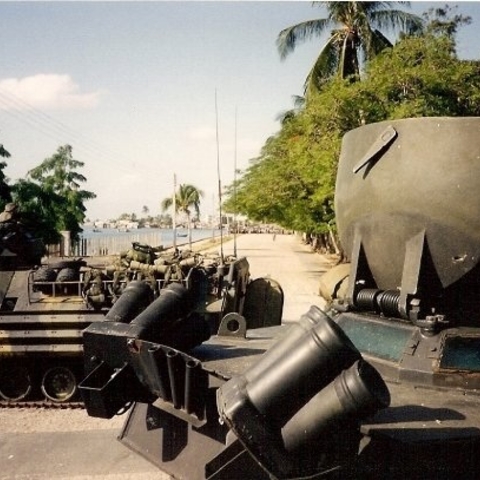
U.S.-led Operation Uphold Democracy in Haiti, 1994
Source: Public Domain
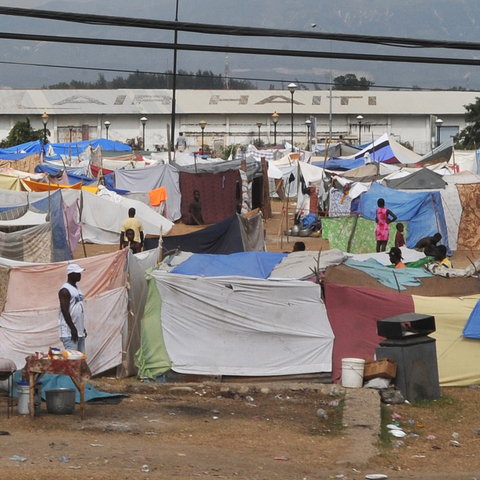
Haitians set up makeshift tents in the aftermath of the 2010 earthquake
Source: Agencia Brasil/Marcello Casal Jr
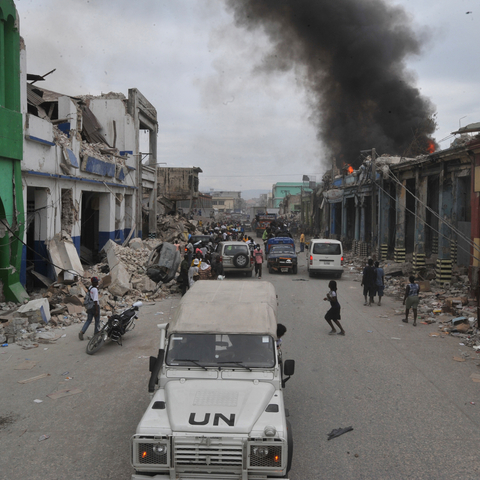
A U.N. vehicle in a Port-au-Prince neighborhood following the 2010 earthquake
Source: Agencia Brasil/Marcello Casal Jr
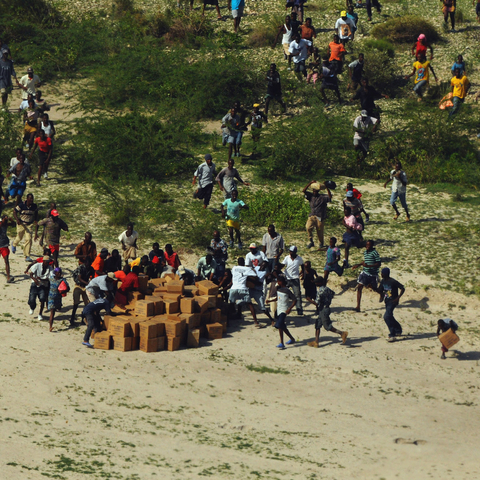
Haitians scramble for U.S. aid packages following the 2010 earthquake
Source: Public Domain

A depiction of fighting during the Haitian Revolution
Source: Public Domain
Comments: January Suchodolski, The Battle at Santo Domingo

A depiction of Columbus landing in 1492 in Hispaniola, the island shared by the Dominican Republic and Haiti
Source: Public Domain

The American abolitionist Frederick Douglass, who described the U.S. government’s response to the Haitian Revolution as reflecting discomfort with Black freedom and self-determination
Source: Public Domain
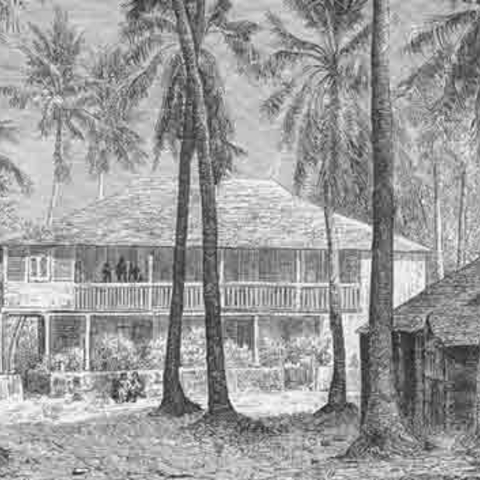
An eighteenth-century colonial mansion in Port-au-Prince
Source: Public Domain

Haiti's National Palace, the president's official residence, stands in ruins following the January 12, 2010 earthquake.
Source: Logan Abassi / UNDP Global

A flag depicting a common Vodun symbol
Source: Wikimedia Commons/ Sam Fentress
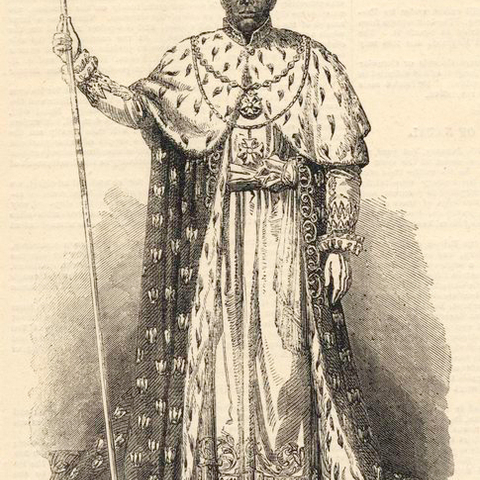
Faustin I of Haiti (reign 1849-1859)
Source: Public Domain
